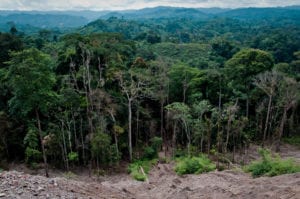Reading time: 5 minutes
About 3500 years ago, an event began that changed the demographic, linguistic, and cultural makeup of the African continent forever. It is described as one of the most momentous events in African history. It has sparked speculation, debate, and curiosity among scholars within the continent and beyond. Unfortunately, it is also greatly understudied and often unknown to history enthusiasts.
By Madison Moulton.
The Bantu Expansion – the migration of Bantu-speaking people across the African continent – is one of Ancient history’s largest migrations. Beginning around 1500BCE, members of the proto-Bantu language group migrated eastward and southward from West Africa, crossing vast swathes of the continent over hundreds of years. These migrants changed population demographics, spread farming across sub-equatorial Africa, introduced iron technology, and built powerful states that continue to influence the African continent today.

Listen to Podcasts about the Bantu Expansion
The Migration: 1500BCE to 500CE
The date is contested, but most historians agree the Bantu Expansion began around 1500BCE. Proto-Bantu speakers, a linguistic branch of the Niger-Congo language family, were concentrated in the region between modern-day Cameroon and Nigeria in West Africa. Possibly caused by population growth, or by conflict, a migration set off in two streams – one East across central Africa, and the other South following the Congo river system.

The early stages of migration were slow. The first 500 years were spent moving a few hundred kilometers through the dense West Central African rainforest. However, the climate-induced destruction of this rainforest in 1000BCE propelled the next stage of migration forward at a rapid pace. Over the next 500 years, Bantu-speakers moved eight times the previous distance (an average of 4000km). Historians believe the migration was splintered in small groups – not large conquering hordes – that separated and settled in new regions.
The migrants settled in three primary areas. In the East, Bantu-speakers settled around the Great Lakes region and created a new population centre supported by a resource-rich environment. Another stream settled in the central areas of modern Democratic Republic of Congo, Angola, and Zambia, initiating a complete population replacement of the native African Pygmies who previously inhabited the area. Others reached South Africa by 500CE and mixed with the native Khoisan-speaking people, contributing to the country’s vast diversity today.
This monumental event has attracted significant debate and speculation that recent research has endeavored to resolve. The primary evidence for the Bantu Expansion is linguistic: the diffusion of Bantu languages throughout the continent. Early critics argued this phenomenon was a result of ‘language spread’ rather than the migration of Bantu-speaking people, but genetic evidence has proved otherwise. Archaeologists have found physical evidence of the migration in pottery, iron-smelting technology, and subsistence farming techniques that originated in the Bantu West African region, creating a timeline of movement across the continent.
Settlement and the Building of Empires: 1000CE – 1900CE
The dominance of Bantu-speaking people is evident in their movement and control over the areas they encountered. Their settlement and development of the first powerful states in Africa is further proof of that dominance.
The Bantu people brought iron-smelting technology and subsistence farming to areas previously dominated by hunter-gatherers or early pastoralists. These innovations facilitated population growth and the division of labour, forming powerful Bantu-controlled African states in the process. These states became the hubs of the continent, forming strong militaries, economic ties with local and international traders, and complex political structures.

A prime example is the Southern African Kingdom of Mapungubwe. Formed in 1075, Mapungubwe was a renowned trading city linking Africa, Asia, and Europe. It was one of the first states in Africa and paved the way for the historic Kingdom of Great Zimbabwe. Another legendary state derivative of the Bantu Expansion is the Zulu Empire. This empire was one of the most powerful in African History and left an indelible mark on modern-day South Africa.
The Bantu people wielded significant influence and undoubtedly dominated every area they settled in. Some historians have referred to the expansion not as migration, but a process of colonization. The majority of sub-Saharan Africans speak one or more Bantu languages and modern African states are heavily affected by their Bantu-migrant predecessors. The impact of the Bantu Expansion has stood the test of time – it continues to influence the demographics, language, and culture of the continent today.
Articles you may also like

Taking back the Homeland – Ethiopian Guerrillas in World War II
Guerrilla warfare played a huge role in World War II. Partisans in France, Yugoslavia, the Eastern Front and the Philippines have much written about them. Vitally important but lesser known were the Abyssinians (Ethiopians) fighting to eject the Italians from their country. By Ellen Rubin. Control of East Africa was essential to the Allies as […]
The text of this article was commissioned by History Guild as part of our work to improve historical literacy. If you would like to reproduce it please get in touch via this form.













